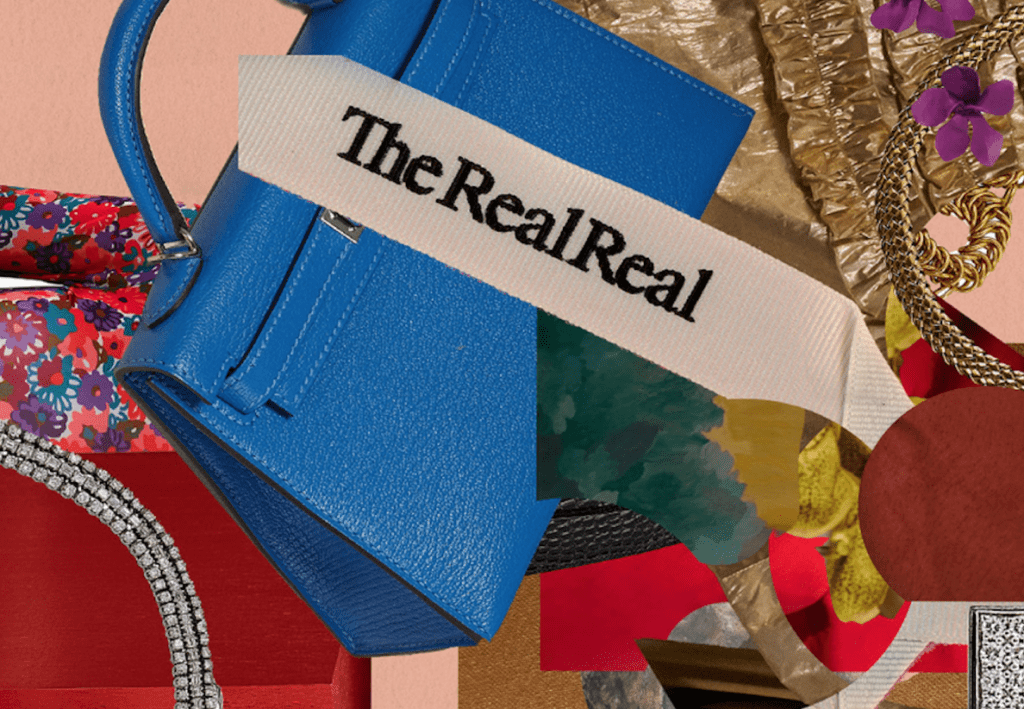Chanel says that The RealReal’s attempt to lodge antitrust claims against it is a “transparent tactic … to divert attention” away from the counterfeiting claims at play. In response to a memo that The RealReal (“TRR”) filed with a New York federal court early this month, in which it sought to amend its answer to assert claims against Chanel for allegedly engaging in an “overarching anticompetitive scheme” to limit the supply and control the prices of its – new and pre-owned – products in the market, counsel for Chanel is calling foul.
In its newly-filed memo in opposition to TRR’s motion for leave to file an amended answer complete with federal and state antitrust counterclaims, Chanel asserts that the court should put a stop to TRR’s attempt to assert new claims – including that Chanel entered into “anticompetitive” agreements with a handful of publications, from the New York Times and New York Magazine to Women’s Wear Daily, and retailers, such as Saks and Neiman Marcus, to stop them from doing business with TRR – on the basis of “delay, dilatory motive, bad faith, and undue prejudice and that amendment is futile.”
According to the strong-worded, 31-page filing that it submitted to the court on Tuesday, Chanel claims that “TRR could have asserted the proposed counterclaims previously but did not,” and that its “delay in bringing claims of which it was aware since 2015 is telling.” Given that “the alleged anticompetitive conduct that actually underlies TRR’s antitrust counterclaims is alleged to have taken place in late 2015 or early 2016,” Chanel argues that TRR’s proposed counterclaims are time-barred by the 4-year statute of limitations imposed by the Sherman Act and the Donnelly Act, which are the basis for TRR’s counterclaims.
Even if the clock had not run on the claims, Chanel alleges that TRR is making them bad faith – and using them “as a means of gaining a tactical advantage in the underlying litigation brought by Chanel” – as evidenced by TRR’s counsel’s “refusal to provide any information or facts underlying the proposed counterclaims [to Chanel]” ahead of its filing even though Chanel argues that “the proposed allegations are vague and conclusory.”
Pointing again to TRR’s delay in bringing the counterclaims even though it has allegedly “been aware of the essential facts underlying such claims for approximately five years,” Chanel contends that the “counterclaims do not concern some actual wrong for which TRR genuinely needs remedy.” Instead, they “are merely the result of TRR’s counsel seeking to obtain some form of leverage in a case where TRR faces multiple claims of false advertising and counterfeiting” – and thus, should be blocked.
Making a Monopoly
Turning to the specific claims that TRR aims to include in its amended answer, Chanel asserts that the reseller has failed to adequately show that Chanel actually monopolized – or attempted to monopolize – the market, and that its tortious interference claims are either time-barred or without merit. On the antitrust front, Chanel claims that TRR seeks to assert three antitrust theories: (1) that Chanel has “unlawfully monopolized” markets for what TRR calls “top tier investment grade” and “hold-value” handbags; (2) that it has attempted to monopolize those markets; and (3) that it “has joined an illegal antitrust conspiracy” with various publications to “boycott” TRR’s advertisements.
As for why TRR’s monopolization claims fail, Chanel asserts that, among other things, the public-trade resale company has not established that Chanel actually has a “dominant market share” in the purported markets at issue. The market share figures that TRR alleges, which range from 30% to 50%, “are insufficient as a matter of law to establish an actual monopolization claim,” per Chanel, which notes that “the Second Circuit has held that market shares as high as ‘54.5%’ are insufficient to plead an attempted monopolization claim.” (Chanel says that case law puts the “minimum market share … between 70% and 80% in order to succeed on a claim of monopolization”).
Still yet, the numbers that TRR does cite are wrong, according to Chanel, on the basis that it is “entirely implausible that Chanel possesses even a 30% market share in a market that includes not only every seller of the relevant handbags (which include Gucci, Prada, Hermes, Louis Vuitton, Givenchy, Ferragamo, Balenciaga, Céline, Burberry, Christian Dior, Saint Laurent, Valentino, Fendi, Versace, and Coach, to name but a few), but also every reseller of such handbags nationwide.” (Chanel notes that “TRR emphasizes that its supposed relevant markets include both sellers and resellers of handbags.”)
This is significant, Chanel says, “as in order to plead a claim for actual monopolization under Section 2 of the Sherman Act, TRR must plausibly allege that Chanel has ‘monopoly power’ in the relevant market.”
In terms of the “unspecified anticompetitive agreements between Chanel and publications requiring that those publications not deal with TRR in ‘late 2015 or early 2016,’” Chanel asserts that “TRR does not allege any facts that would plausibly suggest” that the decisions by the publications to refuse to run TRR’s ads “were part of a conspiracy, as opposed to unilateral conduct.” At the same time, Chanel alleges that TRR does not “allege any facts at all to suggest that Chanel had any involvement in these decisions by the publications, [and] instead, simply in conclusory fashion alleges that this supposed parallel conduct was subject to an illegal antitrust conspiracy.”
Those same agreements between Chanel and various publishers, as well as with retailers like Saks and Neiman Marcus, are the basis of TRR’s tortious interference claims, which Chanel says similarly fail because the alleged arrangements occurred in 2015 and 2016, and as a result, the claims relating to the “fall well outside of the statute of limitations.” As for TRR’s claim that Chanel “used its dominance and influence to convince WWD not to run TRR’s ads” last year, in particular, Chanel claims that TRR “has alleged no specific action on the part of Chanel to cause a disruption in TRR’s alleged relationship with WWD” (or that TRR actually had a contract with WWD for the alleged ad campaign), and as a result, “TRR’s claim must fail.”
What About Farfetch?
Ultimately, Chanel asserts that “each of TRR’s proposed counterclaims could have been asserted well before the time of TRR’s answer on May 29, 2020,” and in fact, the luxury titan claims that “each of the counterclaims in the proposed amended answer could have been brought well before Chanel commenced the instant litigation,” namely because the alleged arrangements at issue predate the filing of this case in 2018.
Chanel notes that TRR has argued that it could not have brought its proposed counterclaims in a more timely fashion “because it discovered information about the contractual relationship between Chanel and third-party Farfetch in August of 2020.” Still yet, Chanel asserts that TRR could have still sought to add the counterclaims sooner given that Chanel entered into its partnership and investment arrangement with Farfetch back in 2018. (TRR argues that the existence of Chanel and Farfetch’s relationship – and more importantly, Chanel’s alleged failure to take uniform legal action against Farfetch for marketing its pre-owned Chanel products in the same ways as TRR – is evidence of Chanel’s launch of a “full-scale assault on resale competitors and an effort to continue Chanel’s dominance in the market.”)
“There is certainly no credible reason that TRR could not have asserted these claims in a timely fashion,” Chanel argues.
As such, it says the court should deny TRR’s motion for leave for the aforementioned reasons, and given that “the new counterclaims would expand discovery beyond the counterfeiting and false adverting claims to antitrust claims based on a different set of facts involving acts and occurrences from 2015 and 2016.”
It is worth noting that fellow resale company What Goes Around Comes Around (“WGACA”) is also currently facing off against Chanel after the French fashion brand filed a nearly identical suit against it in March 2018. In that case, WGACA has also put a fair amount of weight – at least as of late – on Chanel’s relationship with Farfetch and its failure to file suit against the e-commerce marketplace for also selling pre-owned Chanel products and asserting that it authenticates them (the latter being a key point of contention in Chanel’s suits against WGACA and TRR), arguing that this is evidence that Chanel is acting in “bad faith” in pursuit of resale competitors.
WGACA recently renewed its request that the court require Chanel to provide it with information about its “business relationship” with Farfetch, but as of this week, the court shot down that request on the basis that “WGACA has shown no reason Chanel’s treatment of, and activities with regard to Farfetch, with whom it has a business relationship, must be the same as those with regard to WGACA, with whom it has none.”
Chanel argues along those same lines in the case at hand, asserting that while TRR claims that there is a tie between its discovery of Chanel’s partnership with Farfetch and its proposed counterclaims, “there is no relation between the Farfetch transaction” with Chanel and “TRR’s proposed antitrust counterclaims.”
The immediate back and forth comes two years after Chanel first filed suit against TRR in November 2018, accusing the luxury reseller of selling “at least seven counterfeit CHANEL-branded products,” despite its claims that it “ensure[s] that every item on[its site] is 100% the real thing,” and of attempting to “deceive consumers” – by way of “its business advertising and marketing practices” – into “falsely believing that [it] has some kind of approval from or an association or affiliation with Chanel or that all [of the] CHANEL-branded goods [it sells] are authentic.”
TRR sought to have the case dismissed in March 2019, per Chanel, on the basis of “a variety of affirmative defenses including, the first sale doctrine, fair use, and that its ‘100% real’ guarantee was nothing more than a non-actionable ‘general expression of opinion.’” A year later, in March 2020, the Court denied TRR’s motion to dismiss, and shortly thereafter, TRR filed its answer to Chanel’s complaint, in which it “asserted no counterclaims.”
Fast forward to November 3, 2020 and TRR asked the court to allow it to amend that answer to assert a handful of counterclaims against Chanel in light of its discovery of “new evidence” about Chanel’s “motivation” in bringing this trademark-centric lawsuit (and others). Those proposed counterclaims.
The cases shed light on the at-times very rocky relationship between luxury brands in the business of carefully controlling the distribution of their wares and the burgeoning business of luxury resale.
* The case is Chanel, Inc., v. The RealReal, Inc., 1:18-cv-10626-VSB (SDNY).














